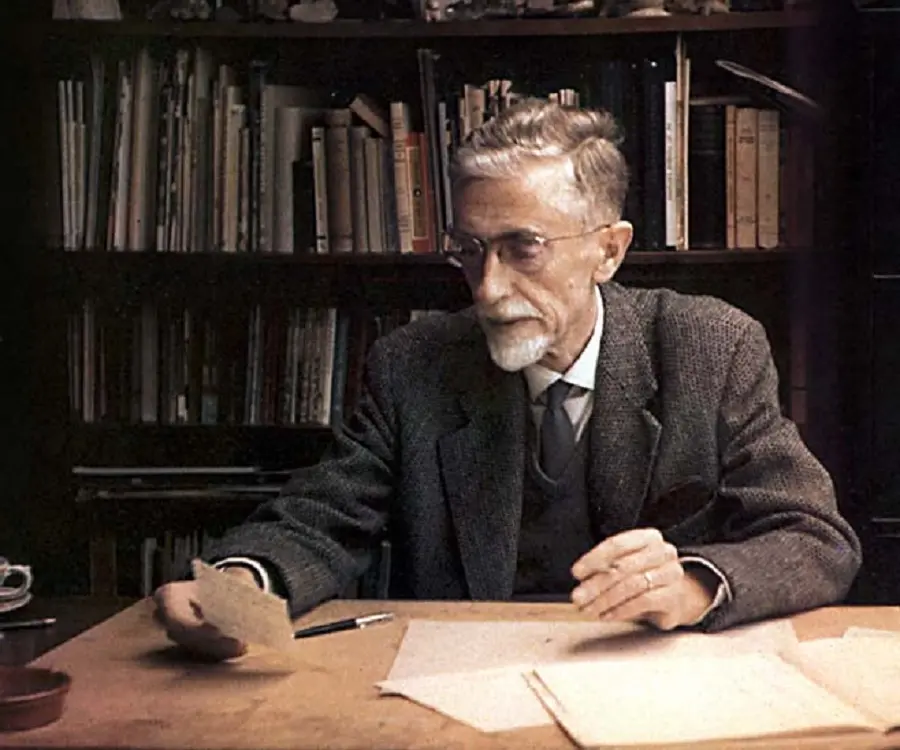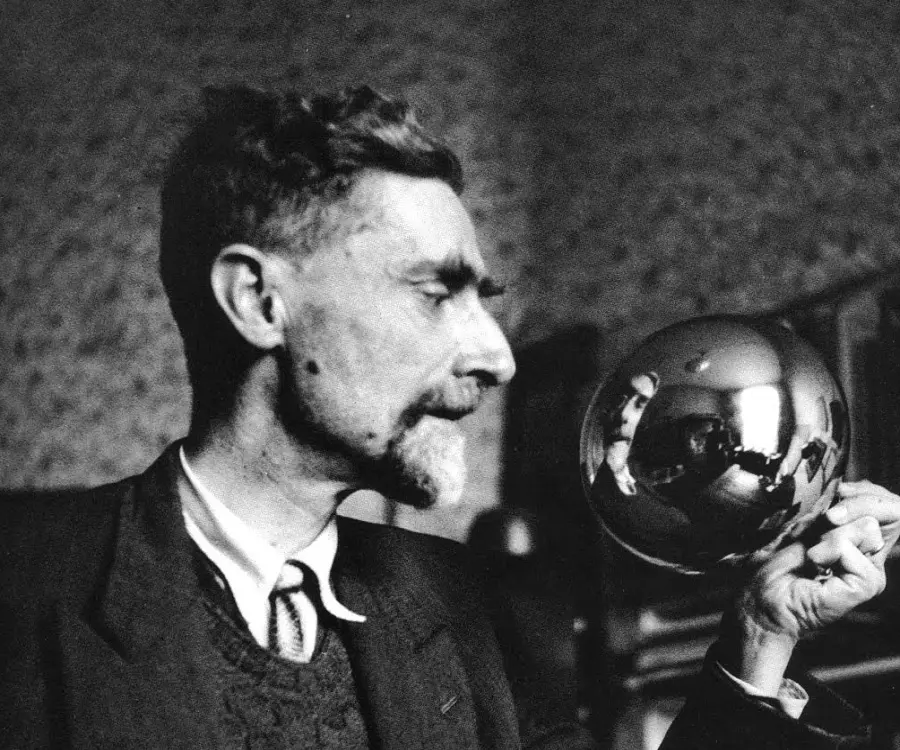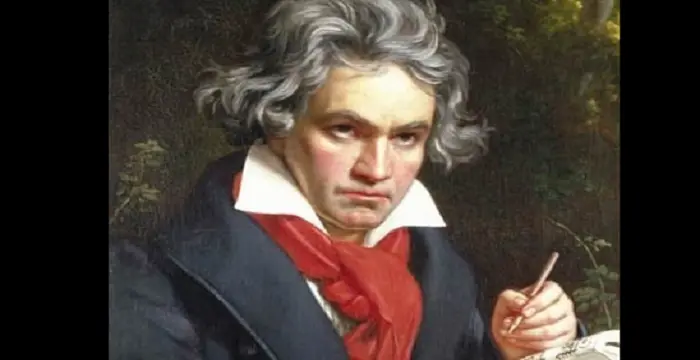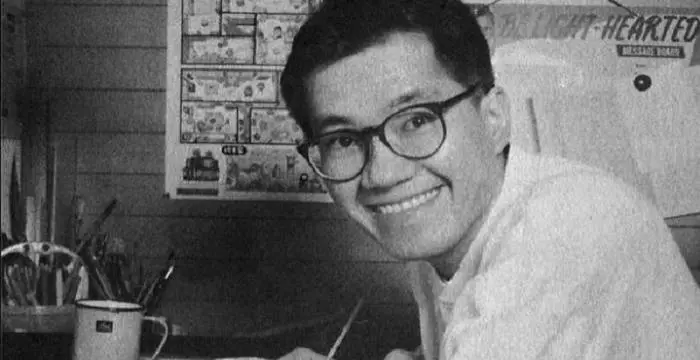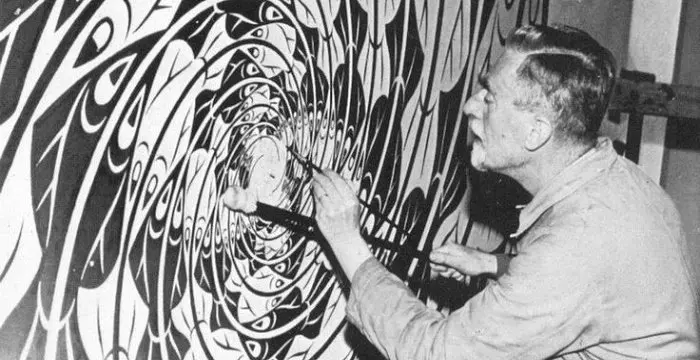
M. C. Escher - Left Handed, Facts and Family
M. C. Escher's Personal Details
M.C
| Information | Detail |
|---|---|
| Birthday | June 17, 1898 |
| Died on | March 27, 1972 |
| Nationality | Dutch |
| Famous | Left Handed, Artists, Miscellaneous |
| Nick names | Mauk |
| Spouses | Jetta Umiker |
| Siblings | Berend George Escher |
| Known as | M.C. Escher, Maurits Cornelis Escher, M. C. Escher ® |
| Childrens | Arthur Escher, Giorgio Arnaldo Escher, Jan Escher |
| Birth Place | Leeuwarden |
| Gender | Male |
| Father | George Arnold Escher |
| Mother | Sara Gleichman Escher |
| Sun Sign | Gemini |
| Born in | Leeuwarden |
| Famous as | Artist |
| Died at Age | 73 |
// Famous Miscellaneous
Jason Simpson
Jason Simpson is the son of former NFL running back, broadcaster and actor O. J. Simpson. Check out this biography to know about his childhood, family, life, and little known facts about him.
Melissa Brim
Melissa Brim is the ex-girlfriend of former professional boxer Floyd Mayweather Jr. Check out this biography to know about her birthday, childhood, family life, achievements and fun facts about her.
Joyce Meyer
Joyce Meyer is a Christian author and speaker. This biography provides detailed information about her childhood, life, achievements, works & timeline
M. C. Escher's photo
Who is M. C. Escher?
M.C. Escher was a world famous 20th century Dutch graphic artist who rose to fame through his innovative and impossible creations in woodcuts, lithographs, and mezzotints, reflecting bizarre optical effects. Although he started off with capturing the scenic beauty of Italy in his realistic sketches and drawings, but eventually, he blended his mathematical concepts into his artworks, thereby making a flourishing career in graphic arts. He crafted several pieces of woodcut after graduating from the School of Architecture and Decorative Arts, Haarlem, and moved to sketching while traveling across Europe, especially Italy and Spain. He ventured into the ‘regular division’ of planes and sketching landscapes with irregular perspectives, creating several masterpieces, namely ‘Eight Heads’ (1922), ‘Castrovalva’ (1930), ‘Metamorphosis’ (1937), ‘Reptiles’ (1937), ‘Day and Night’ (1938), ‘Drawing Hands’ (1948), ‘Relativity’ (1953), and ‘Ascending and Descending’ (1960). His experiments with tilings by using his drawings to carve beechwood spheres proved highly fruitful for him. Besides, he tried his hand at an extremely difficult technique – mezzotint, which produced some of his famous works, like Gallery’ (1946), ‘Crystal’ (1947), and ‘Dewdrop’ (1948). He is credited for composing over 448 lithographs, woodcuts, and wood engravings, apart from 2,000 drawings and sketches, during his entire life
// Famous Left Handed
Aidan Gallagher
Aidan Gallagher is a famous American child actor. Check out this biography to know about his childhood, family life, achievements and fun facts about him.
Nicole Kidman
Nicole Kidman is one of the most talented actors that the Hollywood film industry can boast of. Browse through this biography to get detailed information regarding her life, childhood, profile & timeline
Ludwig van Beethoven
Ludwig Van Beethoven was one of the greatest composers the world has ever had. Check out this biography to know about his childhood, family life, and achievements.
Childhood & Early Life
Maurits Cornelis Escher was born on June 17, 1898, in Leeuwarden, Friesland, as the youngest son of civil engineer George Arnold Escher and Sara Gleichman.
When he was five, the family relocated to Arnhem where his elementary and secondary education took place.
Even though he was good at drawing, he failed his high school exams and hence, never officially completed schooling. However, he learnt carpentry and piano till the age of 13.
In 1919, he enrolled at the School of Architecture and Decorative Arts, Haarlem, to pursue a career in architecture, but switched to graphic and decorative arts after a week upon the advice of graphic teacher, Samuel Jessurun de Mesquita.
With considerable knowledge and experience in drawing and making woodcuts, he graduated in 1922.
Career
He used linoleum blocks to produce his first prints, the earliest being a portrait of his father ‘Escher’s Father’ in 1916. However, his woodcuts print ‘St. Francis (Preaching to the Birds)’ became his first recognized work.
After completing school, he travelled across Italy and Spain in 1922, where the 14th century Moorish castle, Alhambra, in Granada, caught his fascination.
He became passionate about the theory of ‘regular division’ of planes, completing his first artistic work ‘Eight Heads’ in 1922 by cutting eight heads – four male and four female in a wood block, and printing the block four times.
His first one-man show in Siena was held in August 1923, followed by another first-man show in Holland in February 1924.
In 1924, he moved back to sketching landscapes of Italy, emphasizing on irregular perspectives which are practically impossible in natural form.
His famous 1925 woodcuts work ‘Days of creation’ was an outcome of his brother’s tragic death in a mountaineering accident.
The late 1920s was his highly productive phase, during which he held numerous shows in Holland and Switzerland and created some of his most beautiful landscapes and striking illustrations, including ‘Castrovalva’ in 1930.
Inspired by the scenic mountains and ancient hill towns of Italy, he went on to create 15 woodcuts, lithographs and wood engravings, the most significant of them being ‘Atrani, Coast of Amalfi’ in 1931.
In 1935, he moved to Chateaux-d’Oex, Switzerland, after traveling through The Hague and Amsterdam in Holland, and worked vigorously on woodcuts and lithographs.
His first creation of an impossible construction was ‘Still Life and Street’ (1937), after which he composed several more works, such as ‘Sky and Water’ (1938), ‘Drawing Hands’ (1948), and ‘Ascending and Descending’ (1960).
He studied a paper on the concept of 17 plane symmetry groups, through which he produced periodic tilings using 43 colored drawings of different types of symmetry.
While experimenting with tilings, he used his drawings to carve beechwood spheres illustrating a motif of swimming fish, which captivated him so much that he held this sculpture as a prized possession for the rest of his life.
Since he was missing the Italian landscapes, he moved to Uccle in the suburbs of Brussels, Belgium. He, yet again, relocated to Baam, Netherlands, during World War II in 1941, where he resumed the ‘regular division’ drawings.
After the war ended, he was struck by another technique, mezzotint, which was extremely difficult, but produced exceptional results. Some of his famous mezzotint works were ‘Gallery’ (1946), ‘Crystal’ (1947), and ‘Dewdrop’ (1948).
While he became a known face in Europe, his popularity in America increased only in 1951 with his interviews published in two magazines ‘Time’ and ‘Life’, which brought him fame as well as orders.
His first one-man exhibition in the United States was held in Washington in the early 1950s. Since he got busy completing orders, his new works saw a gradual decline.
While in the US, he completed several prints, such as ‘Relativity’ (1953), ‘Convex and Conclave’ (1955), ‘Three Worlds’ (1955), ‘Print Gallery’ (1956), ‘Cube with Magic Ribbons’ (1957), and ‘Belvedere’ (1958).
His book ‘Regular Division of the Plane’, a collection of a series of woodcuts, was released in 1958.
His first book of prints ‘Grafiek en Tekeningen’ was published in 1960, which included 76 works personally described by Escher.
In 1969, he created the woodcut ‘Snakes’ which became his last piece of work. The following year, he shifted base to Rosa Spier Huis in Laren, North Holland, where he spent his remaining life.
Major Works
His 1937 woodcuts design ‘Metamorphosis’ is an excellent example of depicting a story through pictures by incorporating mathematics into art. ‘Metamorphosis II’ and ‘Metamorphosis III’ are other larger creations of the series.
His ‘Reptiles’ (1937) is a cult example of an abstract concept, where two and three-dimensional images are perfectly combined to bring the reptiles in the picture to life.
While experimenting with plane-filling techniques, transformations, and shapes, he created an exceptional woodcut print ‘Day and Night’ in 1938, which is regarded as one of his best single works.
Awards & Achievements
He received the third prize at the Exhibition of Contemporary Prints at the Art Institute of Chicago, for his print ‘Nonza’, which was later purchased by the Institute - his first print sale to an American museum.
In 1955, he was bestowed with the Knighthood of the Order of Orange Nassau from the Kingdom of the Netherlands.
Personal Life & Legacy
He met Jetta Umiker in 1923 while touring Italy and married her in 1924 in Viareggio. The couple moved to Rome, where they lived till 1935.
The couple had three sons – Giorgio Arnaldo Escher (1926), Arthur Escher (1930), and Jan Escher (1938).
He died on March 27, 1972 at his home in Laren, at the age of 73, leaving back a collection of over 2,000 works.
His works are housed in National Gallery of Art (Washington DC), Boston Public Library (Massachusetts), Escher Museum (The Hague), Huis ten Bosch (Japan), Israel Museum (Jerusalem), and National Gallery of Canada (Ottawa).
Trivia
This distinguished graphic artist shared a common trait with a few of his legendary predecessors, Leonardo da Vinci, Michelangelo, Holbein, and Durer – all of them were left-handed.
// Famous Artists
Susan Mikula
Susan Mikula is an American artist and photographer. Check out this biography to know about her childhood, family life, achievements and fun factsabout her life.
Akira Toriyama
Akira Toriyama is a Japanese manga artist. This biography profiles his childhood, family, personal life, achievements, etc.
Bob Ross
Bob Ross was a celebrated, creative American painter and an art instructor. Check out this biography to know about his birthday, childhood, family life, achievements and fun facts about him.
M. C. Escher's awards
| Year | Name | Award |
|---|---|---|
Other | ||
| 0 | Knighthood of the Order of Orange-Nassau | |
M. C. Escher biography timelines
- // 17th Jun 1898Maurits Cornelis Escher was born on June 17, 1898, in Leeuwarden, Friesland, as the youngest son of civil engineer George Arnold Escher and Sara Gleichman.
- // 1916He used linoleum blocks to produce his first prints, the earliest being a portrait of his father ‘Escher’s Father’ in 1916. However, his woodcuts print ‘St. Francis (Preaching to the Birds)’ became his first recognized work.
- // 1919In 1919, he enrolled at the School of Architecture and Decorative Arts, Haarlem, to pursue a career in architecture, but switched to graphic and decorative arts after a week upon the advice of graphic teacher, Samuel Jessurun de Mesquita.
- // 1922With considerable knowledge and experience in drawing and making woodcuts, he graduated in 1922.
- // 1922After completing school, he travelled across Italy and Spain in 1922, where the 14th century Moorish castle, Alhambra, in Granada, caught his fascination.
- // 1922He became passionate about the theory of ‘regular division’ of planes, completing his first artistic work ‘Eight Heads’ in 1922 by cutting eight heads – four male and four female in a wood block, and printing the block four times.
- // 1923 To 1935He met Jetta Umiker in 1923 while touring Italy and married her in 1924 in Viareggio. The couple moved to Rome, where they lived till 1935.
- // Aug 1923 To Feb 1924His first one-man show in Siena was held in August 1923, followed by another first-man show in Holland in February 1924.
- // 1924In 1924, he moved back to sketching landscapes of Italy, emphasizing on irregular perspectives which are practically impossible in natural form.
- // 1925His famous 1925 woodcuts work ‘Days of creation’ was an outcome of his brother’s tragic death in a mountaineering accident.
- // 1926 To 1938The couple had three sons – Giorgio Arnaldo Escher (1926), Arthur Escher (1930), and Jan Escher (1938).
- // 1930The late 1920s was his highly productive phase, during which he held numerous shows in Holland and Switzerland and created some of his most beautiful landscapes and striking illustrations, including ‘Castrovalva’ in 1930.
- // 1931Inspired by the scenic mountains and ancient hill towns of Italy, he went on to create 15 woodcuts, lithographs and wood engravings, the most significant of them being ‘Atrani, Coast of Amalfi’ in 1931.
- // 1935In 1935, he moved to Chateaux-d’Oex, Switzerland, after traveling through The Hague and Amsterdam in Holland, and worked vigorously on woodcuts and lithographs.
- // 1937 To 1960His first creation of an impossible construction was ‘Still Life and Street’ (1937), after which he composed several more works, such as ‘Sky and Water’ (1938), ‘Drawing Hands’ (1948), and ‘Ascending and Descending’ (1960).
- // 1937His 1937 woodcuts design ‘Metamorphosis’ is an excellent example of depicting a story through pictures by incorporating mathematics into art. ‘Metamorphosis II’ and ‘Metamorphosis III’ are other larger creations of the series.
- // 1937His ‘Reptiles’ (1937) is a cult example of an abstract concept, where two and three-dimensional images are perfectly combined to bring the reptiles in the picture to life.
- // 1938While experimenting with plane-filling techniques, transformations, and shapes, he created an exceptional woodcut print ‘Day and Night’ in 1938, which is regarded as one of his best single works.
- // 1941Since he was missing the Italian landscapes, he moved to Uccle in the suburbs of Brussels, Belgium. He, yet again, relocated to Baam, Netherlands, during World War II in 1941, where he resumed the ‘regular division’ drawings.
- // 1946 To 1948After the war ended, he was struck by another technique, mezzotint, which was extremely difficult, but produced exceptional results. Some of his famous mezzotint works were ‘Gallery’ (1946), ‘Crystal’ (1947), and ‘Dewdrop’ (1948).
- // 1951While he became a known face in Europe, his popularity in America increased only in 1951 with his interviews published in two magazines ‘Time’ and ‘Life’, which brought him fame as well as orders.
- // 1953 To 1958While in the US, he completed several prints, such as ‘Relativity’ (1953), ‘Convex and Conclave’ (1955), ‘Three Worlds’ (1955), ‘Print Gallery’ (1956), ‘Cube with Magic Ribbons’ (1957), and ‘Belvedere’ (1958).
- // 1955In 1955, he was bestowed with the Knighthood of the Order of Orange Nassau from the Kingdom of the Netherlands.
- // 1958His book ‘Regular Division of the Plane’, a collection of a series of woodcuts, was released in 1958.
- // 1960His first book of prints ‘Grafiek en Tekeningen’ was published in 1960, which included 76 works personally described by Escher.
- // 1969In 1969, he created the woodcut ‘Snakes’ which became his last piece of work. The following year, he shifted base to Rosa Spier Huis in Laren, North Holland, where he spent his remaining life.
- // 27th Mar 1972He died on March 27, 1972 at his home in Laren, at the age of 73, leaving back a collection of over 2,000 works.
// Famous Gemini Celebrities peoples
Wentworth Miller
Wentworth Miller is an American actor and screenwriter who achieved recognition for his role in the TV series ‘Prison Break’.
Joyce Meyer
Joyce Meyer is a Christian author and speaker. This biography provides detailed information about her childhood, life, achievements, works & timeline
Zoe LaVerne
Zoe LaVerne is an American musical.ly star. Check out this biography to know more about her family, personal life, including her age, birthday, etc.
WolfieRaps
Check out all that you wanted to know about WolfieRaps, the famous YouTube Personality; his birthday, his family and personal life, his girlfriends, fun trivia facts and more.
Adam Saleh
Check out all that you wanted to know about Adam Saleh, the famous YouTube Personality; his birthday, his family and personal life, his girlfriends, fun trivia facts and more.
Isaak Presley
All about American actor and singer Isaak Presley including his age, birthday, family life, girlfriends, net worth, and some fun facts.
M. C. Escher's FAQ
What is M. C. Escher birthday?
M. C. Escher was born at 1898-06-17
When was M. C. Escher died?
M. C. Escher was died at 1972-03-27
Where was M. C. Escher died?
M. C. Escher was died in Laren, North Holland
Which age was M. C. Escher died?
M. C. Escher was died at age 73
Where is M. C. Escher's birth place?
M. C. Escher was born in Leeuwarden
What is M. C. Escher nationalities?
M. C. Escher's nationalities is Dutch
What is M. C. Escher nick names?
M. C. Escher's nickNames is Mauk
Who is M. C. Escher spouses?
M. C. Escher's spouses is Jetta Umiker
Who is M. C. Escher siblings?
M. C. Escher's siblings is Berend George Escher
Who is M. C. Escher childrens?
M. C. Escher's childrens is Arthur Escher, Giorgio Arnaldo Escher, Jan Escher
Who is M. C. Escher's father?
M. C. Escher's father is George Arnold Escher
Who is M. C. Escher's mother?
M. C. Escher's mother is Sara Gleichman Escher
What is M. C. Escher's sun sign?
M. C. Escher is Gemini
How famous is M. C. Escher?
M. C. Escher is famouse as Artist



